Related Tags
How Automotive Design has influenced the electric guitar for seven decades
Fast cars and loud guitars go together like peaches and cream, but these two powerful symbols of American rebellion have been influencing each other on the design side for decades – here’s how the two became the best of friends.
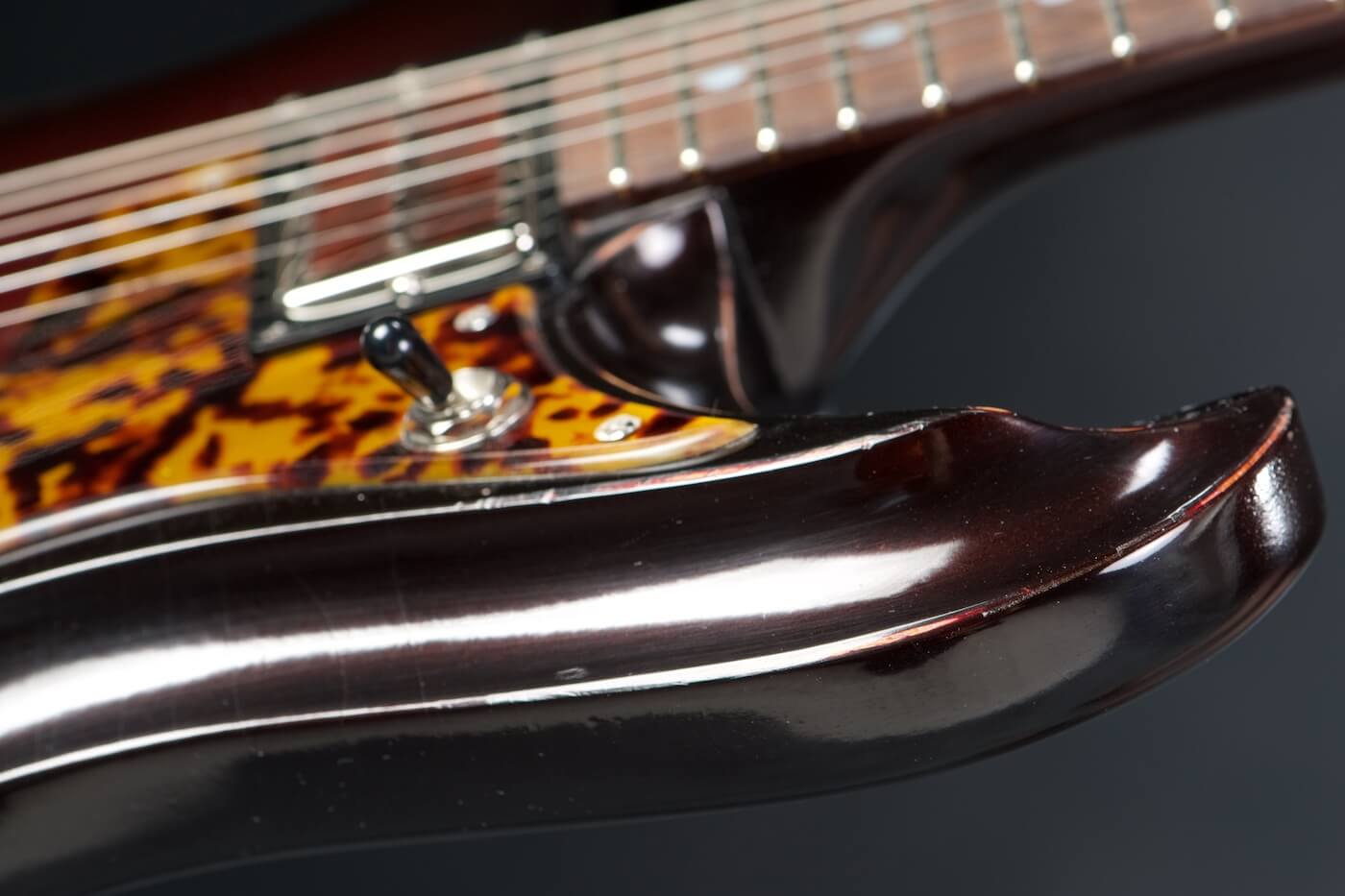
Electric guitars exploded into the public consciousness between the 1940s and 1960s, and so it makes sense that many of the people designing instruments at that time were heavily inspired by the design of automobiles from that period.
- READ MORE: A brief history of Fender amps
After all, there’s plenty of parallels and crossover between the attitude and style of rock ‘n’ roll and the brash rebelliousness of hot-rod car culture in this time. And it surely didn’t hurt that automotive design, particularly in the USA, was enjoying perhaps its most bold, varied and timeless era – giving the guitar designers the and now plenty to work with.
The evolution
While the focus of this article will be primarily on modern design, from after the birth of the solidbody electric guitar, it would be remiss to not mention that automobile design has been influencing instrument design dating back to the 1700s, as even some features of Stradivarius instruments are said to have been possibly influenced by carriages of the time.
But the post-WWII 1950s signaled a boom of innovative automotive engineering, especially in the US, while hot on the heels, companies like Fender and Gibson were blazing a path in the newfound market of solidbody electric guitars. Many great songs were written about Rocket 88s and Hot Rod Lincolns, and Deuce Coups. But hot rod culture inspired rock ‘n’ roll on deeper levels as well.
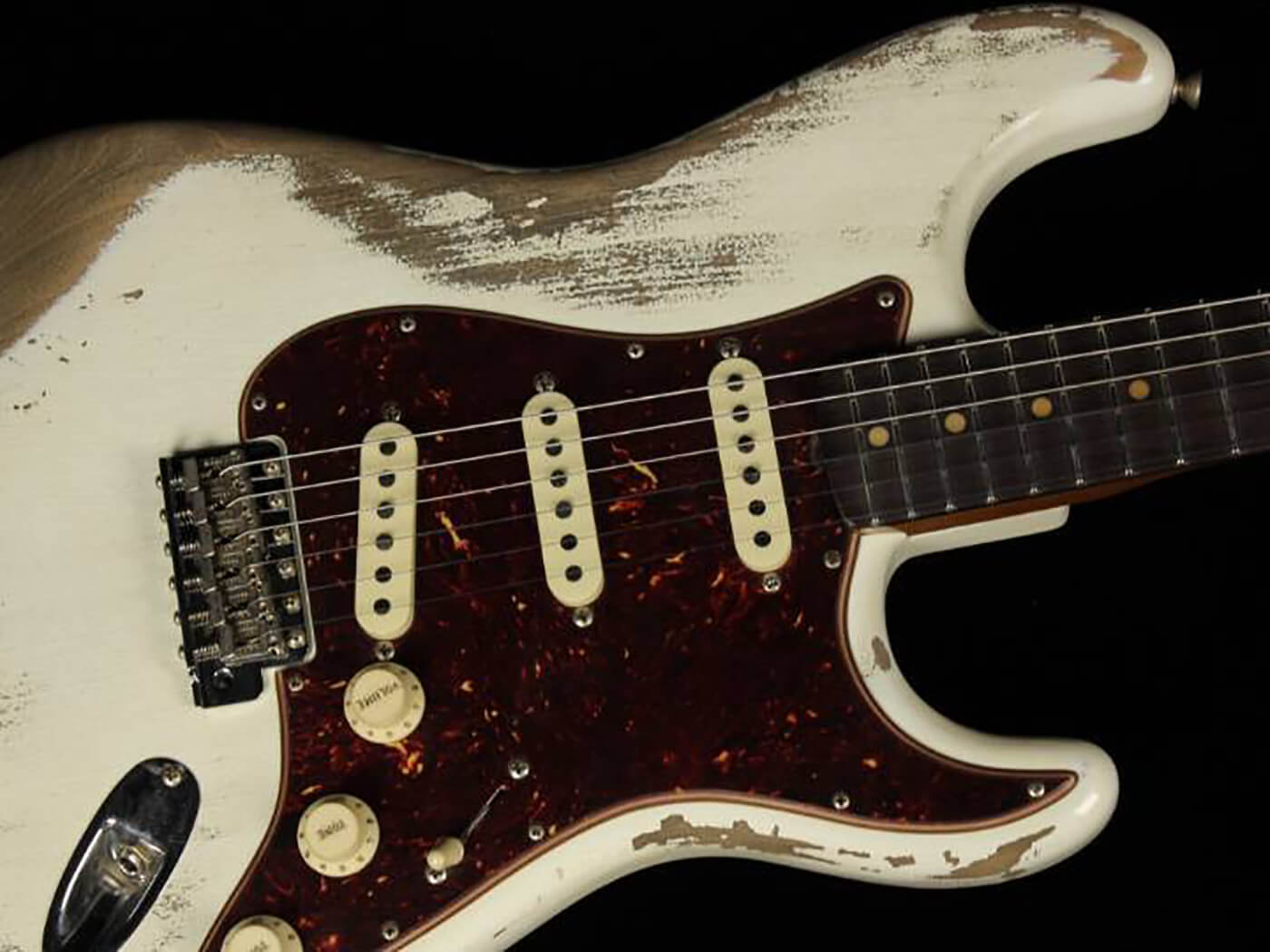
Hot Rodding: Function over fashion
The idea of “function over fashion” governed the hot-rod industry ever since people discovered that going fast is fun. People didn’t take the fenders off their vehicles because it looked cool, they did it to reduce weight and aid in cooling the ever-modified engines, used for racing. Various modifications were done to increase performance, but later took on a life of their own and began to be a modification people would do because culture had decided that this did look cool actually, and gave the vehicle a hot-rodded, racing attitude.
An easy comparison in the guitar world would be Eddie Van Halen’s Frankenstrat – a highly modified guitar that embodied the “function over fashion” mindset. It was simultaneously crude, ugly, and cool as hell. What followed was a wave of people emulating the paintjob, and various modifications that we see on that guitar. In this way, “function over fashion” inspired a whole generation of fashionable Super-Strats with wild paintjobs.

The attitude
Any artist who embodies the rock and roll spirit all owe some of their style to the world of classic cars, whether it be the look, the attitude, the sound, or the soul. Artists like James Hetfield, Brian Setzer, Social Distortion, ZZ Top, and the entire genre of rockabilly are great examples of this.
Automobiles have been a longstanding icon for a freedom to roam and explore all the world has to offer. A music instrument, like a guitar, to many of us represents a tool to roam the deepest chasms of our creative minds. Both objects inseparably linked by their most basic function.
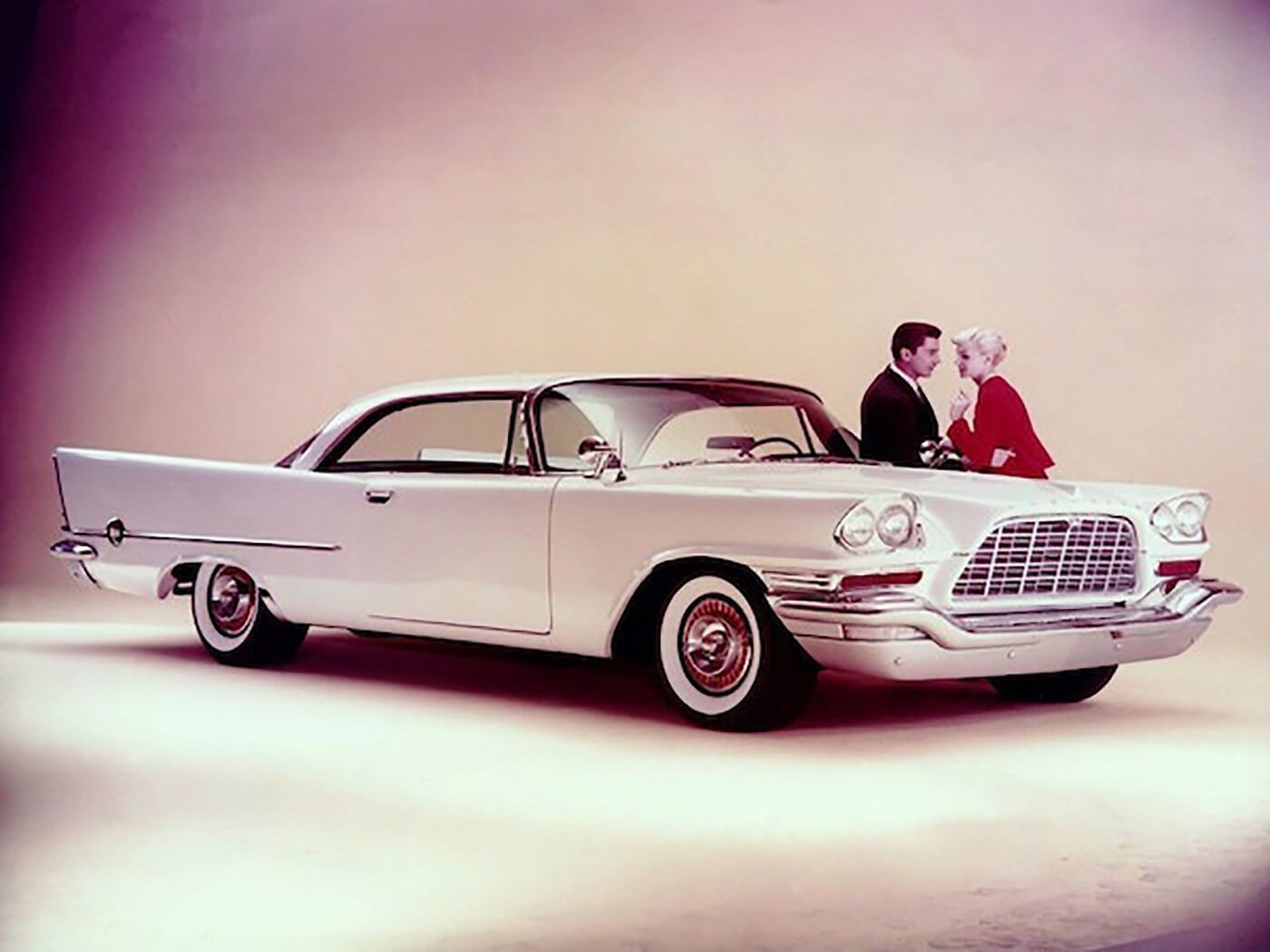
The colors & curves
The Fender Jazzmaster came out in 1958 and featured curves and horns that were evocative of the lines on the Buicks and Cadillacs of the preceding years. In 1952, solid body guitars could be defined by the bulbous designs of the Telecaster and Les Paul designs. Those began to give way to the sharper, sleeker Stratocaster shape in 1954, hot on the tail of the brand-new auto designs of 1953 which included the Chevrolet Corvette, Cadillac Eldorado, and Buick Skylark – all which featured a sleeker design with sharper body lines. In 1958, Gibson released the Explorer and Flying V models, which also featured characteristic reminiscent of the ever-growing fender fins in the auto industry – particularly those of Chrysler and Cadillac.
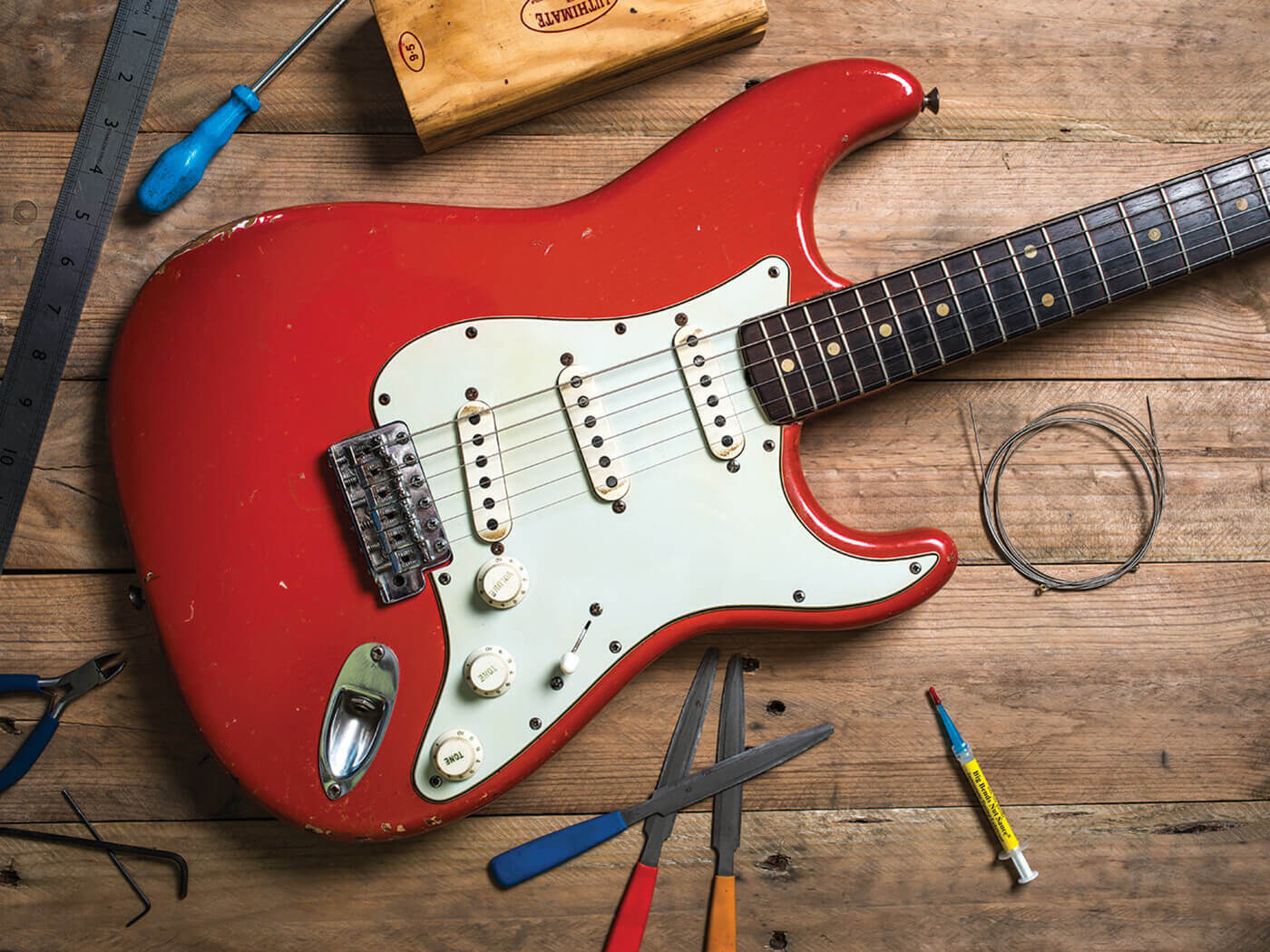
The colors featured on Fender guitars in the late 50s, early 60s were taken directly out of automakers’ color catalogues in the late 50s. Fiesta Red, for example, is also known as DuPont code 2219-H, which was the same color code used on Ford’s 1956 Thunderbird and Fairlane models. “Surf Green” was used by Chevy in 1957 and “Foam Green” was a color Buick used in 1956. Colors like Lake Placid Blue (Metallic), Daphne Blue, Sonic Blue, Olympic White, Dakota Red, and the Metallic Firemist Gold and Silver were all Cadillac colors.
Interestingly enough, we still don’t know which color code Fender used for their black guitars back in those days. Most people believe it closely matches the Black Corvettes used in ’54 and ’58 or Cadillac in ’58. One of Fender’s most prized custom colors was Candy Apple Red, which was not a production color for any auto manufacturers, but rather the brainchild of a hot-rodder and car customizer named Joe Bailon.

T-birds and Firebirds
Gibson was no stranger to borrowing colors and curves from the auto industry either. Their Golden Mist color is a ’59 Oldsmobile color. The Goldtops used a nitro clearcoat with a crescent bronze powder mixed in, (Color ID #256 in case you’re wondering…). When Gibson designed the Firebird, they brought in a consultant named Ray Dietrich, who was, by trade an auto designer who had designed automobiles for Packard and Lincoln, among others.
The continuous flowing lines of the neck thru guitar are reminiscent on the running boards that flow up into front fenders on his old designs. He also later co-founded LeBaron Inc. which would fit a custom body on a running chassis – some of the finest pre-WWII custom cars came from LeBaron. The Custom Firebirds between 1963-1969 took their colors directly from the catalogues of Oldsmobile and Cadillac [there was also Kerry Green, which was from the Buick catalogue and Ember Red, which was from Edsel].
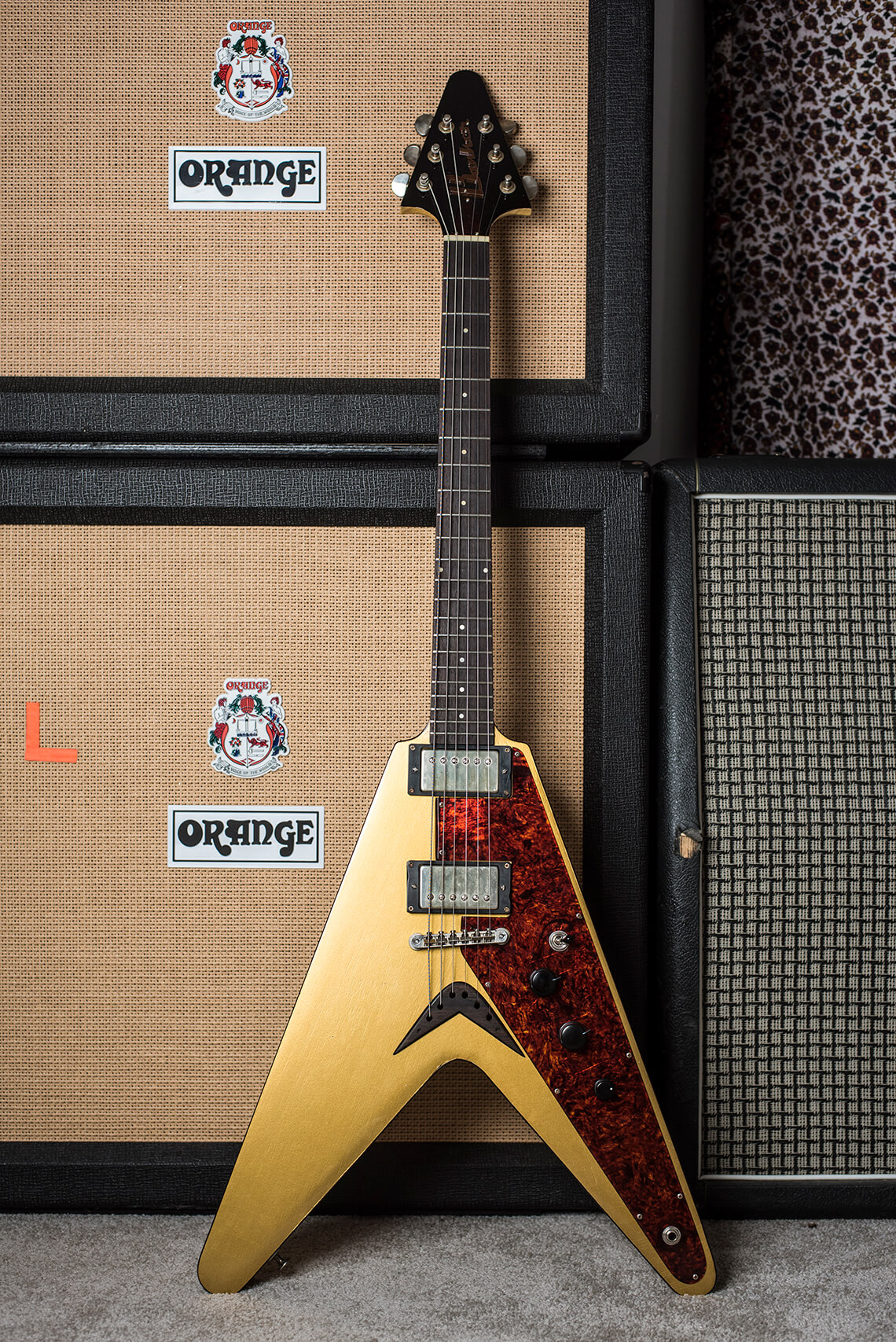
70 years of inspiration
The curves found on guitar designs, particularly Fender models like the Stratocaster and Jazzmaster drew influence from not only mainstream automotive designers, but the futuristic fin work of designers like Virgil Exner’s “Forward Look” that made cars look sleeker, smoother, and more aggressive. A big component of his designs were fender fins, which are probably the most obvious contribution to Fender’s designs. Those curves and characteristics continue to be an inspiration for builders out there.
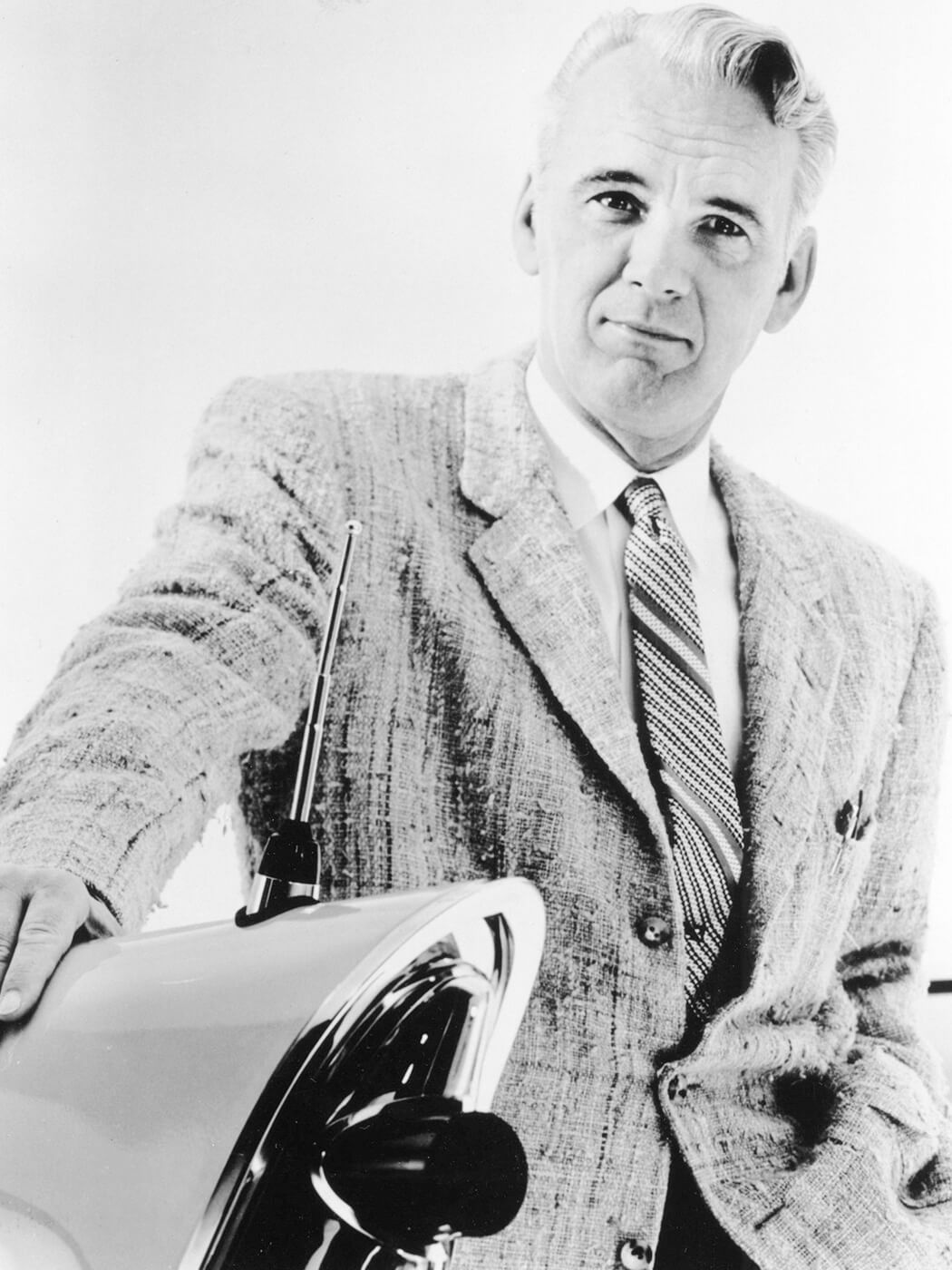
One recent example is Gabriel Currie’s Echopark Guitars, which recently created a lineup of guitars called the Exner Series – it won’t surprise you to learn that these instruments are directly inspired by the innovative features that Exner brought to the world of automotive designs. Those guitars are currently in the arsenals of Troy Van Leeuwen and Joe Perry, proving that automotive designs of yesteryear are still influencing the design of musical instruments today.
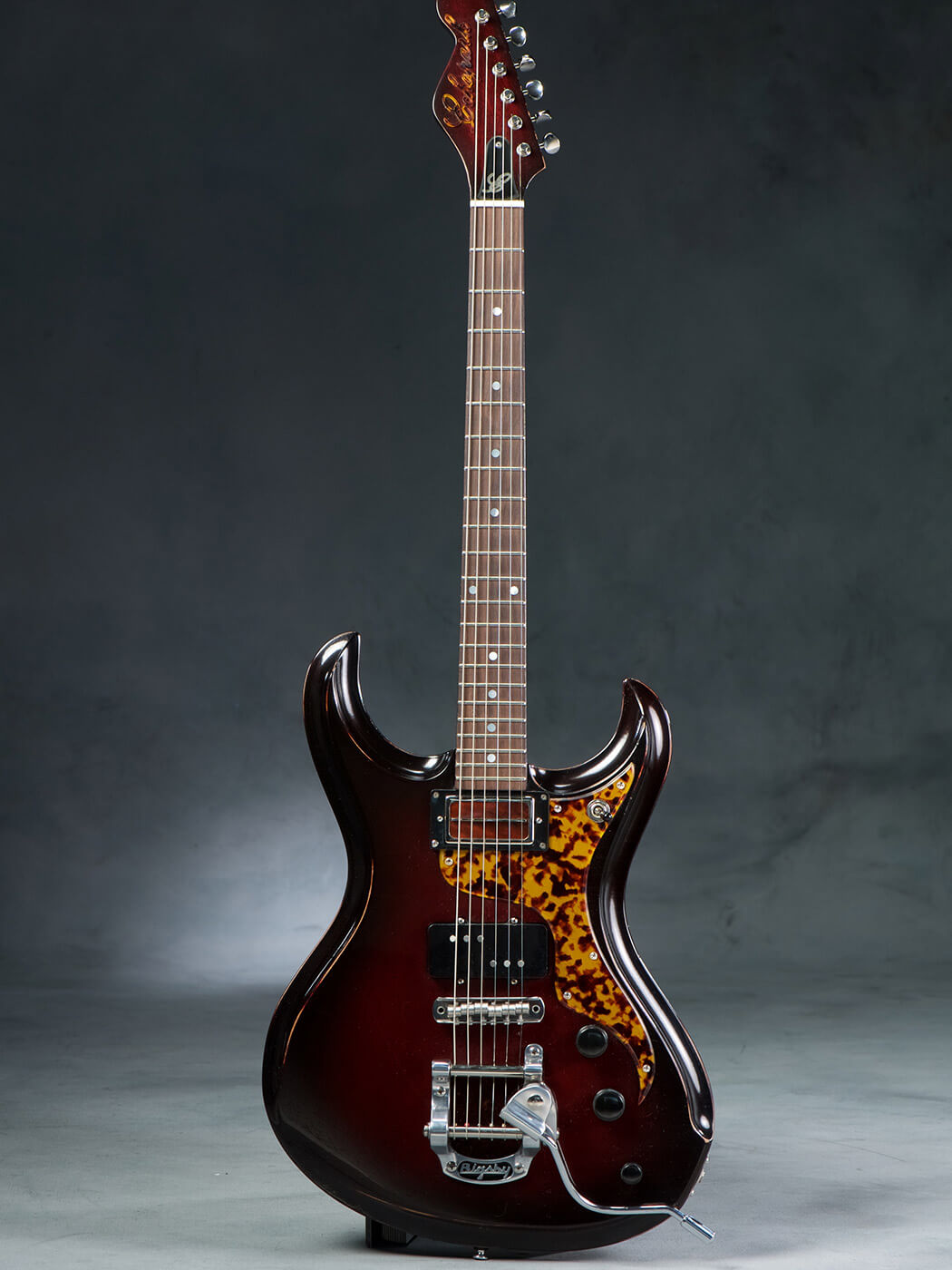
To all the great automotive designers out there, the guitar industry owes a debt of homage and gratitude, for the inspiration, the color and curves, the attitude, the function & fashion that define our industry.
For more features, click here. Read more about the history of other guitar makers here.
